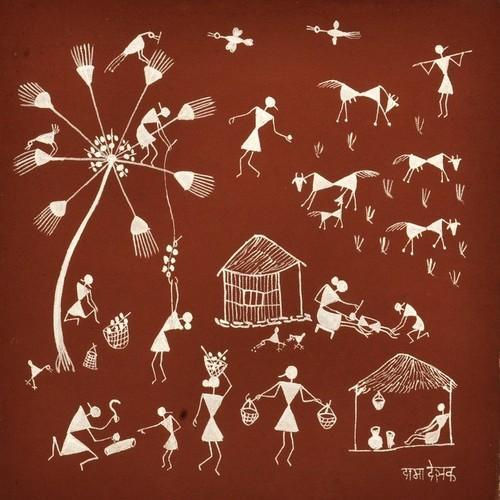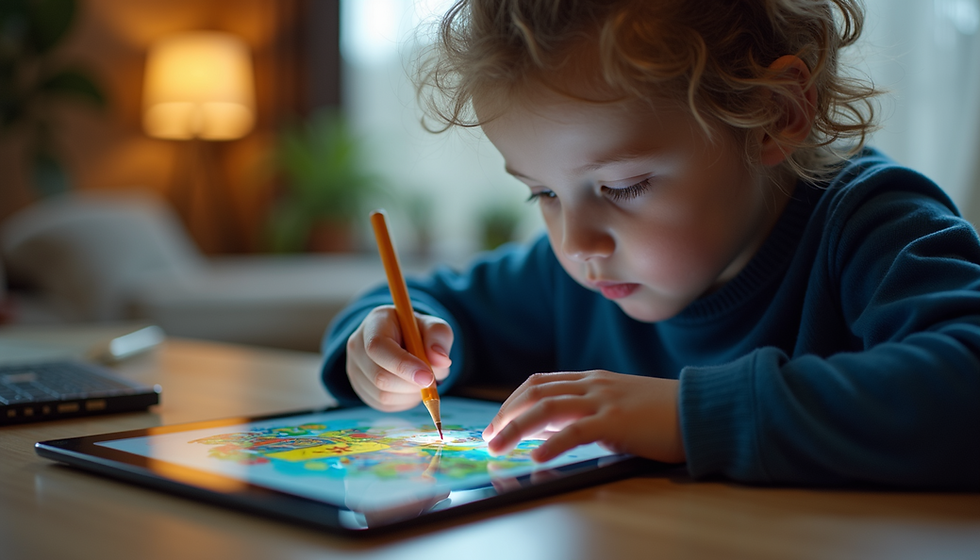Gond Painting
- CAMI Info
- Dec 4, 2021
- 3 min read
Updated: Aug 30, 2022
According to Census 2011 data, the Gond population is estimated to be over 12 million. The Deccan plateau, which spans northern Andhra Pradesh, eastern Maharashtra, Madhya Pradesh, Jharkhand, and western Odisha, is home to the Gond.
The word 'Gond' derives from the word Kond, which means green mountains, the Gond's home. The origins of Gond paintings may be traced back to the same time period as the Gonds themselves, about 2000 years ago.

What is Gond Painting
Gond painting is a well-known traditional art of the central Indian Gond tribal people. It is done in order to preserve and share the Gond tribal community's culture. Folk dances, folk melodies, and Gond paintings are examples of Gond tribal art. Digna and Bhittichitra are the originators of today's Gond art. On the walls and floors of their homes, the Gonds paint Digna, a traditional geometric pattern. Houses have Bhittichitra paintings on the walls, which feature pictures of animals, plants, and trees. Natural colors are used to paint the walls and floors of women's homes.
History of Gond Painting
The Gond tribe is one of India's most populous tribal groups. Madhya Pradesh, Telangana, Bihar, Maharashtra, Odisha, and Andhra Pradesh are home to these tribals. Agriculture, or daily earnings, is the Gond tribe's primary occupation. The word Gond derives from the word 'Kond,' which means green mountains, and tribal people are known as Gondi’s because they live primarily in Madhya Pradesh's beautiful green mountains.
The Gond people believe that viewing a good image will bring them a lot of good fortune. As a result, Gond tribal paintings are created for a variety of festivals, rites, and ceremonies, including Diwali, Karva Chauth, Nag Panchami, birth, and marriage.
How to make Gond art?
Today in an art museum-like, Children’s art museum of India helps online art submission and there you can learn more about the various form of art. Typically, this art form is painted over a brown background made up of mud and cow dung cakes. Shapes and figures are drawn with the white color. The white pigment was made from a mixture of rice and water, as well as gum, and chewed bamboo sticks were employed as a paintbrush at the end. A spiral chain of individuals surrounding a central theme is perhaps the most prevalent theme in Warli art.
Today, small works of art are created on cloth and paper, but they appear best on the walls or in the form of magnificent paintings that depict the Warlis' vast and mysterious realm. This traditional art, however, is no longer limited to painting on mud walls.
Nature of Gond Painting
Every element of nature, including the hills, the sky, and the trees, is inhabited by a spirit, according to the Gond people. Nature's forms are thus recreated with care and worship for their divine essence. These paintings demonstrate the Gond tribe's deep relationship with nature's spirit. The stories and legends of India are reflected in Gond paintings. They also represent scenes from people's everyday lives. Abstract notions such as emotions, dreams, and imaginative constructs are shown in detail in a detailed story. Because many of the Pardhan Gonds are talented musicians, their paintings frequently depict the stories that their songs tell.
Process of making Gond Painting
This art genre, also known as On-Line Work, is made up of painstakingly painted lines that give static images a sensation of movement. Marks and dots are used to increase the degree of movement detail. The use of bright colors like yellow, red, white, and blue is also a unique aspect of this art genre.
Natural things such as colored soil, charcoal, clay, plant sap, leaves, flowers, and even cow dung are used to create the paints. However, due to the shortage of natural colors, artists have begun to construct these art forms using canvas and poster colors.
Each Gond painting is a work of art in its own right. These art pieces show a modern mind, blending mystery, pattern, color, and comedy.
Final Thoughts
Gond art has changed over time and is now being represented on paper and canvas by outstanding painters. It's also made on wooden trays and boxes, which are popular in other nations. It's also encouraging to see the Indian government working to protect the Gond artwork.
The Must Art Gallery is the first gallery dedicated completely to Gond art in the world. The exhibition features unique artwork that captures the essence of the tribes and allows tribal artists to express themselves in their native tongue. The future of Gond art, like the art genre itself, looks bright!




Comments